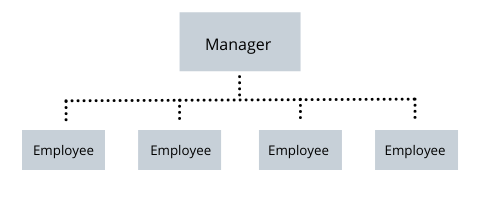Types of Organizational Structure
Specialists within a line-and-staff organization can be segregated. There are three types of authority are present: line, staff, and functional.

Line specialist is the right to carry out projects and exact presentations from other individuals.
LINE AUTHORITY
Line authority movements down the chain of command. For instance, line authority gives a manufacture superintendent the right to direct an worker to operate a particular machine, and it gives the head of finance the right to request a certain report from a department head.
Therefore, line authority gives an individual a certain degree of power relating to the performance of an
organizational mission.
Two important clarifications should be measured, however, when discussing line authority: (1) line authority does not ensure effective act, and (2) line authority is not controlled to line peoples.
The head of a staff department has line authority over his or her employees by virtue of authority associations between the division head and his or her directly reporting teams.
STAFF AUTHORITY
Staff authority is the right to counsel with line authority. For example, human resource department personnel assistance to other departments by selecting a skilled workforce.
A quality control executive aids a production manager by determining the suitable quality level of products or services at a business corporation, introducing quality plans, and carrying out statistical studies to ensure compliance with quality standards.
So, staff authority gives staff workers the right to suggest in an effort to expand line procedures.
FUNCTIONAL AUTHORITY
We refer functional authority to as partial line authority. It gives a staff person control over a specific job, such as safety or accounting.
Usually, functional authority is given to specific work staff with skills in a certain area. For example, associates of a finance department might have specialist to request documents they need to prepare financial reports, or a human resource executive might have authority to ensure that all departments are fulfilling with equal employment opportunity laws.
Functional authority is a special type of authority for staff personnel, which must be chosen by top management.
LINE-AND-STAFF CONFLICT
Because of different positions and kinds of authority within a line-and-staff organization, the conflict between line and staff personnel is almost unavoidable.
Although minimal conflict due to differences in point of view is natural, conflict on the part of the line and staff personnel can disturb an entire organization.
There are various reasons for conflict which may be Poor human relations, overlapping authority and obligation, and mismanagement of staff personnel by top management are all major reasons for the emotional state of bitterness between line and staff personnel.
This bitterness can cause various departments to look at the organization from a narrow attitude instead of looking at the organization.
Fortunately, there are several ways to minimize conflict which as given:-
- One way is to integrate line and staff personnel into a work team.
- The success of the work totally depends on how well each group can work together and make efforts to increase performance.
- To ensure that it clearly needs the areas of responsibility and authority of both line and staff personnel to be defined. With clearly defined lines of authority and responsibility, each group may better understand their role in the organization.
- To hold both line and staff personnel accountable for the results of their own activities. Line personnel should not be totally accountable for poor performance resulting from staff personnel
advice.
Line-and-staff
organizations combine the direct flow of authority present within a line organization with staff departments that offer support and advice.
A clear chain of command is a constant characteristic among line-and-staff organizational structures. Problems of conflict may arise, but organizations that clearly define responsibility can help minimize such conflict.
For further reading you may go through following article Leasing 101: A Roadmap to Cost-Effective Asset Management.